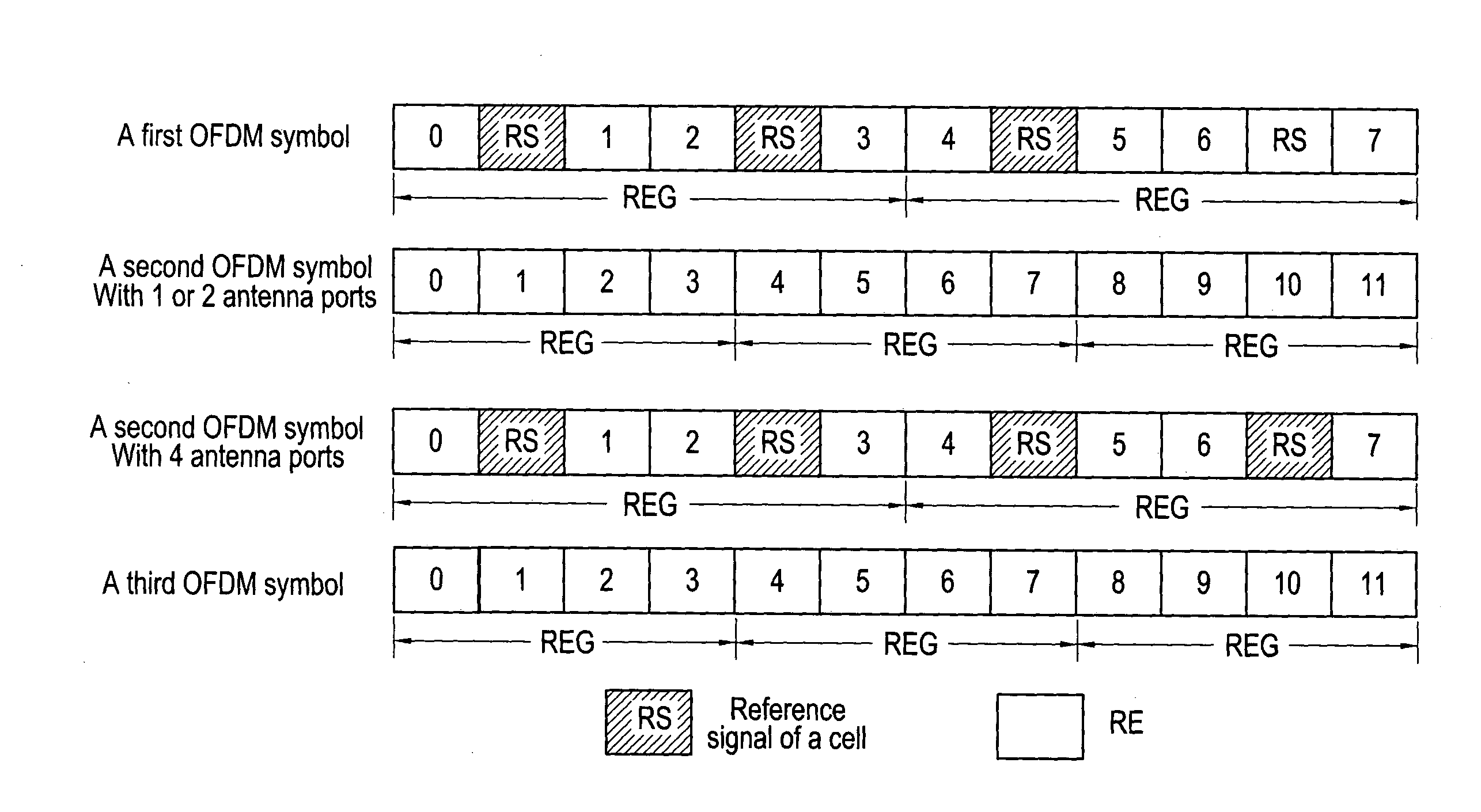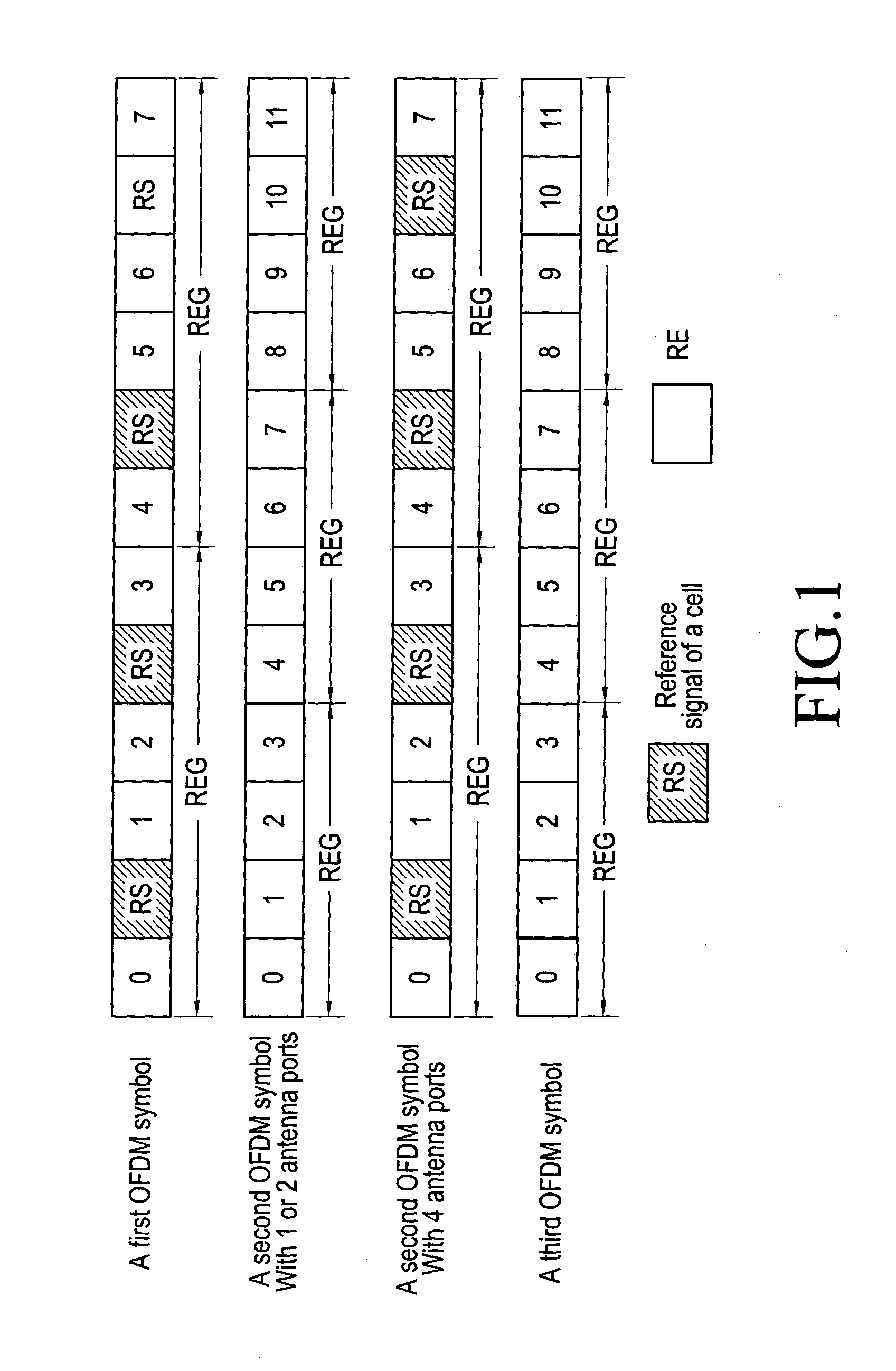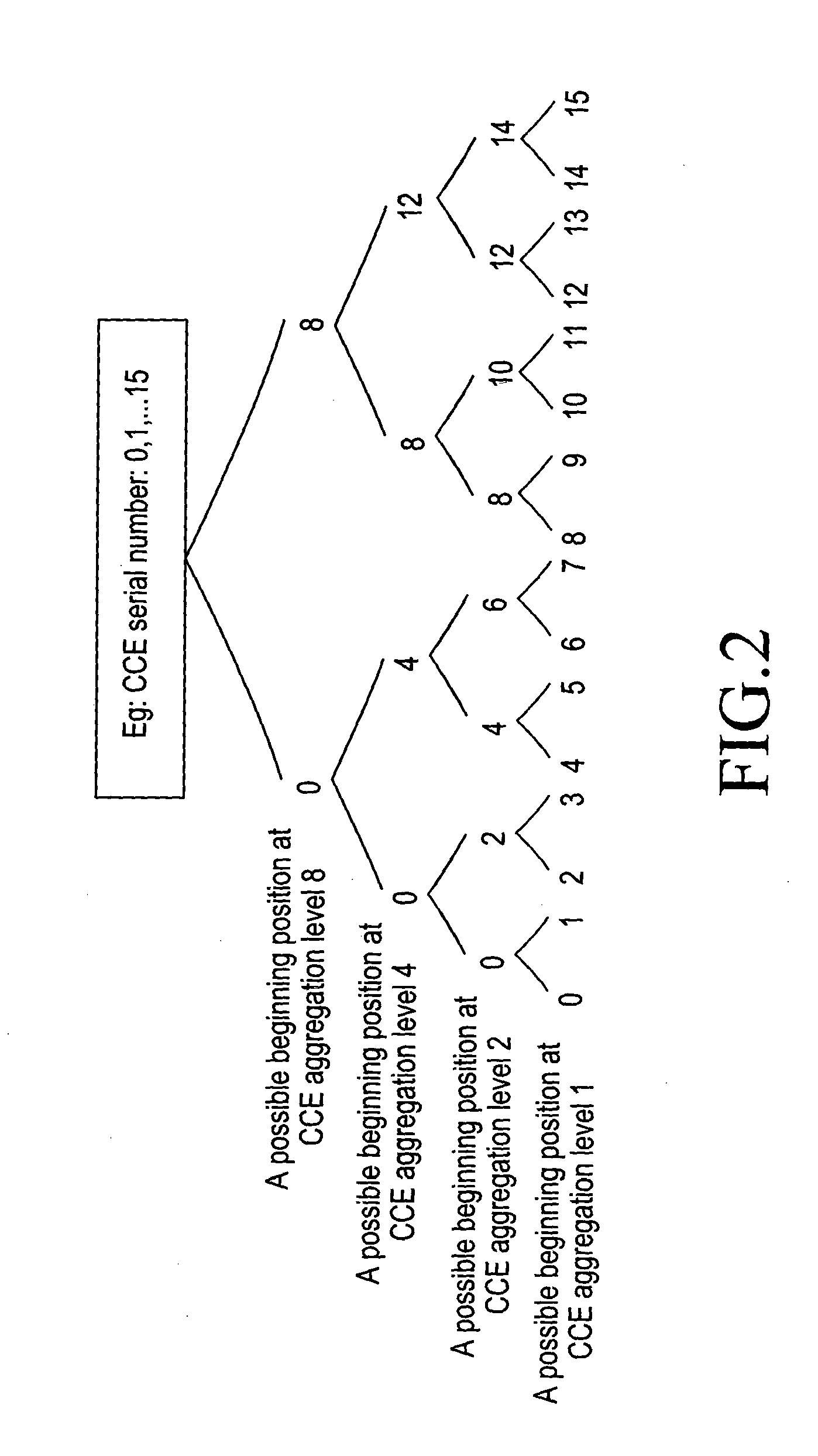Method and device of resource allocation in physical downlink control channels
- Summary
- Abstract
- Description
- Claims
- Application Information
AI Technical Summary
Benefits of technology
Problems solved by technology
Method used
Image
Examples
embodiment 1
[0066]As shown in FIG. 4, a method of resource allocation in PDCCHs includes steps as follows:
[0067]At Step S102, relative positions of UEs in at least two neighboring cells are determined;
[0068]Herein, the method of determining the relative positions of UEs in at least two neighboring cells includes Step 11 and Step 12:
[0069]at Step 11, for every cell, an uplink signal strength of an UE in the cell measured in the cell and an uplink signal strength of an UE in neighboring cells measured in the cell;
[0070]at Step 12, for every UE in every cell, the relative position of the UE is determined according to the uplink signal strength of the UE in the cell measured in the cell and the uplink signal strength of the UE measured in the S neighboring cells, herein S is a positive integer greater than 0.
[0071]Specifically, the determining may be made under following situations:
[0072]Situation 1: if |Q11−Qj1|Threshold, determine that the UE within the current cell is located in the overlapping ...
embodiment 2
[0116]Embodiment 2 of the present application provides a device of resource allocation in PDCCHs to apply a method mentioned in Embodiment 1. As shown in FIG. 7, the device of resource allocation includes a position determining module 10, a calculating module 20 and a selecting and allocating module 30, herein:
[0117]The position determining module 10 is adapted for determining relative positions of UEs in at least two neighboring cells.
[0118]The calculating module 20 is adapted for determining a CCE aggregation level of a PDCCH for every UE, and calculating a UE-specific search space of the PDCCH for the UE in each subframe according to the CCE aggregation level of the PDCCH for every UE.
[0119]The selecting and allocating module 30 is adapted for, when the position determining module 10 determines that at least two UEs are in an overlapping area in neighboring cells and the at least two UEs belong to different neighboring cells, for every UE of the at least two UE, selecting a group...
embodiment 3
[0134]The present Embodiment 3, for example, illustrates a method in Embodiment 1 in details. And Cell a neighbors Cell b in this embodiment.
[0135]A method provided in Embodiment 3 includes steps as follows:
[0136]At Step S202, an eNB sends cell-specific parameters and UE-specific parameters of Cell a and Cell b to a device of resource allocation; herein, the cell-specific parameter is a PCI, and the UE-specific parameter is a C-RNTI and a distinctive attribute for UE uplink signals, such as CQI, or time-frequency position information about Sounding Reference Signal (hereinafter referred to as SRS), etc. The information sent is specifically shown in Table 4 and Table 5:
TABLE 4Cell-specific Parameter and UE-specific Parameter of Cell aPCIUE C-RNTIDistinctive Attribute for UEPCI aax1ax2PCI aay1ay2
[0137]Table 4 indicates that: the PCI of Cell a is PCI a, the C-RNTI of two UEs within Cell a is ax1 and ay1 respectively, and the distinctive attribute for UE ax1 uplink signals is ax2 and th...
PUM
 Login to View More
Login to View More Abstract
Description
Claims
Application Information
 Login to View More
Login to View More - R&D
- Intellectual Property
- Life Sciences
- Materials
- Tech Scout
- Unparalleled Data Quality
- Higher Quality Content
- 60% Fewer Hallucinations
Browse by: Latest US Patents, China's latest patents, Technical Efficacy Thesaurus, Application Domain, Technology Topic, Popular Technical Reports.
© 2025 PatSnap. All rights reserved.Legal|Privacy policy|Modern Slavery Act Transparency Statement|Sitemap|About US| Contact US: help@patsnap.com



